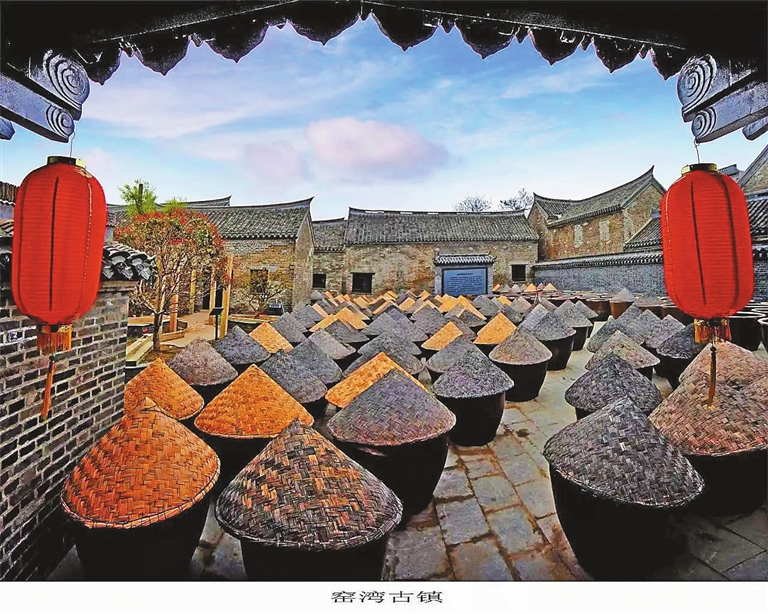



NOVEMBER is the best time of the year to appreciate an autumn view. If you are looking for a golden palace full of ginkgo foliage, Tengchong Ginkgo Village in Yunnan and the Guanyin Zen Temple in Xi’an are not the only options. There is a saying: “If you want to appreciate ginkgo in Jiangsu Province, you have to go to Xuzhou City; if you want to appreciate ginkgo in Xuzhou City, you can’t miss Pizhou.” In addition to providing feasts for your eyes with gorgeous foliage views, Xuzhou has a lot more to offer. Han Cultural Scenic Spot To appreciate the essence of the cultures of two Han dynasties, Western Han (206 B.C.-A.D. 25) and Eastern Han (25-220), you must visit the Han Culture Scenic Spot in Xuzhou, which covers an area of 1,400 mu (933 square meters). The site is located in the eastern part of Xuzhou. It is well known as the nation’s biggest theme park of Han culture. It includes three main museums, one being a mausoleum, one exhibiting a collection of terracotta figurines and a stone relief museum. The core area consists of essential scenic spots of the two Han dynasties, including the Tomb of the King of Chu State on Lion Mountain, the Han Terracotta Warriors Museum, the Han Culture Exchange center, Liu’s Ancestral Hall, Zhulin Temple, the Yanggui Mountain Exhibition Hall (the Queen’s Tomb) and the Underwater Terracotta Warriors Museum. Guishan Han Tomb The town is called the “Pyramid in the East,” and is also full of mystery. The Guishan Han Tomb, as an embodiment of the culture of the Han Dynasty (206 B.C.-A.D. 220), is situated on the west side of Guishan Mountain. It is the tomb for Liu Zhu, the sixth king of Chu State who reigned between 128-116 B.C., and his wife during the Western Han Dynasty. Covering an area of over 700 square meters, the tomb consists of two parallel but communicating parts: the south part is the tomb of the king and the north part is that of his wife. The main body of the tomb consists of 15 halls including bedrooms, parlors, kitchens and even a washing room and stables. The whole tomb is like an underground palace. Pengzu Garden Pengzu Garden is the birth place of Pengzu culture. Pengzu is a legendary long-lived figure in China. He was regarded as a saint in Taoism. The pursuit of the elixir of life by practitioners of Taoism was highly influenced by Pengzu. Standing in a southern suburb of Xuzhou, the garden covers an area of almost 40 hectares (400,000 square meters), which includes a floor area of 17,527 square meters and a water area of 17,000 square meters. Within the garden, there is a Pengzu statue, the Pengzu Ancestral Temple, Dapeng Pavilion, the Dapengshi Kingdom Bluestone Memorial Gate, the Happiness & Longevity Square, the Pengzu Sacrifice Square, and the Shoupeng Stone Garden. One spot that cannot be missed in the garden is its cherry forest. When spring comes, the cherry blossoms together with the ancient pavilions in the garden form a painting with an antique flavor. Hubu Mountain The ancient residential buildings of Hubu Moutain is formed by five ancient courtyards built in the Ming (1368-1644) and Qing (1644-1911) dynasties. Covering more than 25,000 square meters, the area is home to more than 300 houses. The buildings were built along the mountain with the traditional quadrangle courtyard as the main architectural form. Most walls used bluestones and black bricks. There are many carved beams and painted rafters in the buildings. Yaowan Ancient Town Yaowan ancient town is a watery ancient town where the Beijing-Hangzhou Grand Canal meets Luoma Lake. With a history of over 1,300 years, the town is surrounded on three sides by water. When you come here, you can walk on the 1,000-year-old flagstone road, taste the tea at a tea house on the old street and check out the traditional morning market. (Chen Xiaochun) | 
